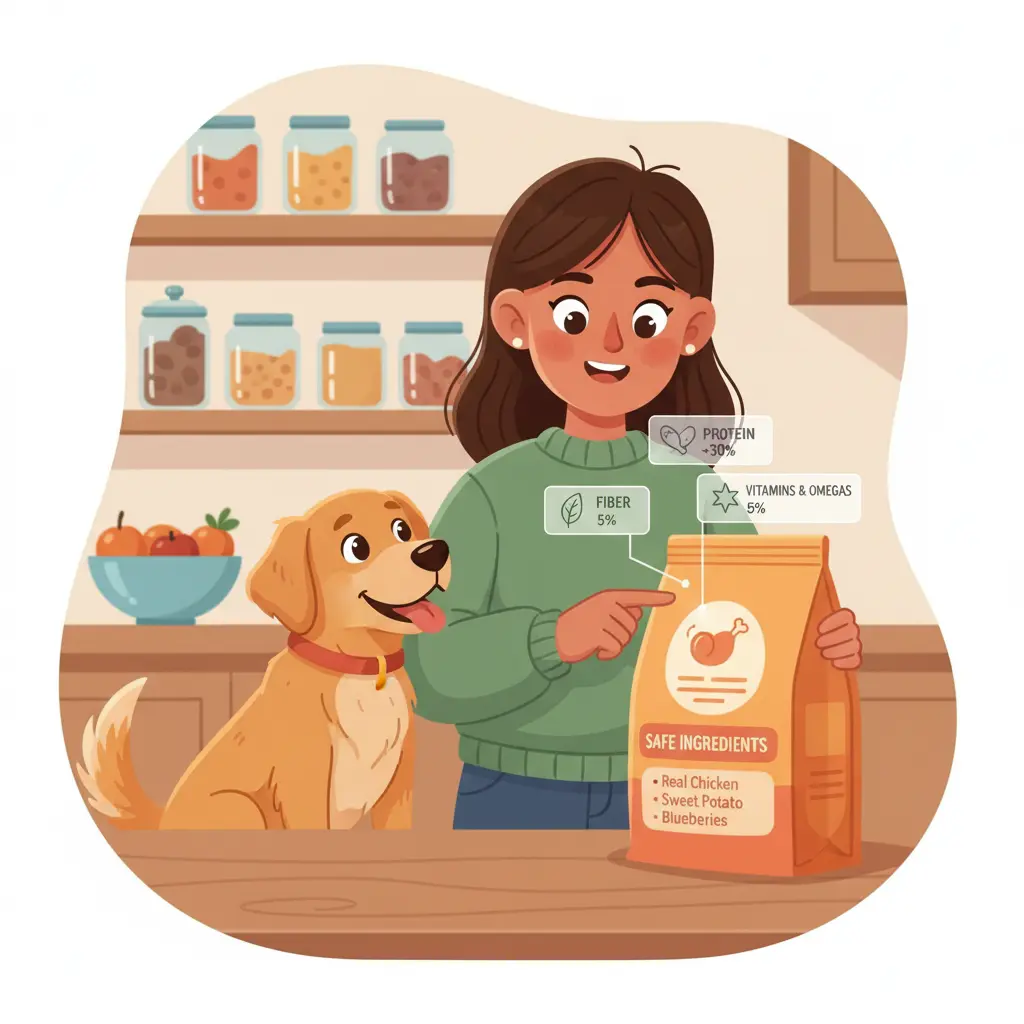Choosing the right food for your dog can feel overwhelming. Store shelves are lined with countless options, all boasting claims like “premium,” “natural,” or “grain-free.” Yet, understanding what’s actually inside the bag or can is essential to keep your furry friend healthy, energetic, and thriving. Learning to read dog food labels effectively ensures you’re making informed decisions that support your dog’s unique needs. Here’s a comprehensive guide to decoding labels like a pro.
Why Reading Dog Food Labels Matters
Dog food labels are more than marketing—they provide critical information about ingredients, nutritional content, and suitability for your pet. Knowing how to interpret these labels allows you to:
- Choose foods that meet your dog’s age, size, and activity level.
- Avoid harmful additives, fillers, or low-quality proteins.
- Identify allergens or ingredients that may upset your dog’s digestion.
- Compare brands effectively to find the best value for nutrition.
Key Sections of a Dog Food Label
Understanding the main parts of a dog food label is the first step toward making an informed choice.
1. Product Name and Descriptors
The product name often highlights the main ingredient, but pay attention to qualifiers:
- “Chicken Dinner” vs. “Chicken Flavor” – A “dinner” must contain at least 25% of the named ingredient, while “flavor” can have very little.
- “With” or “Formulated For” – Terms like “with salmon” indicate a smaller proportion of that ingredient.
2. Guaranteed Analysis
This section lists minimum or maximum percentages of key nutrients:
- Protein: Essential for muscle maintenance and growth.
- Fat: Provides energy and supports skin and coat health.
- Fiber: Aids digestion and gut health.
- Moisture: Shows water content; higher moisture usually means lower calorie density.
3. Ingredient List
Ingredients are listed in descending order by weight. This is one of the most important sections to scrutinize:
- Whole meats and meat meals are preferred protein sources.
- Grains and vegetables provide carbohydrates and fiber.
- By-products and fillers can be less nutritious; not all are harmful, but quality varies.
Look for clarity—brands that specify exact sources (e.g., “chicken meal”) are generally more transparent.
4. Nutritional Adequacy Statement
This statement indicates if the food meets standards set by the Association of American Feed Control Officials (AAFCO):
- “Complete and Balanced” – Provides all essential nutrients for the specified life stage.
- Life Stage Labeling – Some foods are for puppies, adults, or all life stages. Feeding the right stage ensures your dog gets appropriate nutrition.
5. Feeding Guidelines
Suggested portion sizes help prevent overfeeding or underfeeding, but consider your dog’s weight, activity level, and metabolism.
6. Additional Claims
Marketing claims like “grain-free,” “natural,” or “premium” can be misleading:
- Grain-Free: Not automatically healthier; some dogs may benefit from grains for fiber.
- Natural: Indicates minimal processing but doesn’t guarantee superior nutrition.
- Premium or Superfood-Enhanced: Evaluate actual ingredients, not just labels.
Tips for Evaluating Ingredients Like a Pro
Look for High-Quality Protein Sources
Protein should come from named meats, fish, or poultry, not unspecified by-products.
Check Carbohydrate Sources
Healthy carbs include whole grains, sweet potatoes, and vegetables. Avoid excessive fillers like corn gluten or wheat middlings.
Watch Out for Artificial Additives
Artificial colors, flavors, and preservatives may be unnecessary or harmful. Natural preservatives like tocopherols (vitamin E) are preferable.
Consider Your Dog’s Specific Needs
- Puppies need higher protein and fat.
- Senior dogs benefit from joint-supporting ingredients like glucosamine.
- Dogs with allergies may need limited ingredient or novel protein diets.
Decoding Common Misleading Terms
- “Meal” vs. “By-Product Meal”: Chicken meal is concentrated protein from the meat, while by-product meal may include less desirable parts.
- “Holistic”: Not a regulated term; focus on actual ingredients and nutrient balance.
- “Human-Grade”: Indicates ingredients meet food safety standards but doesn’t necessarily mean better nutrition.
Practical Steps for Choosing the Right Food
- Start With Your Dog’s Needs: Age, size, activity level, and health conditions.
- Compare Ingredients and Guaranteed Analysis: Look beyond marketing claims.
- Check for AAFCO Approval: Ensures complete and balanced nutrition.
- Introduce Gradually: Mix new food with current meals to prevent digestive upset.
- Monitor Your Dog: Observe coat health, energy levels, and stool quality to gauge suitability.
Conclusion: Make Informed Choices for a Healthier Pup
Reading dog food labels may seem complex at first, but understanding the key sections—product names, guaranteed analysis, ingredient lists, and nutritional statements—empowers you to choose foods that support your dog’s health. Avoid being swayed solely by marketing claims and instead focus on quality ingredients, balanced nutrients, and suitability for your pet’s life stage.
A well-informed pet parent can navigate the overwhelming world of dog food with confidence, ensuring their furry friend receives meals that are nutritious, safe, and enjoyable. By learning to read labels like a pro, you’re investing in your dog’s long-term health and happiness—one bowl at a time.



